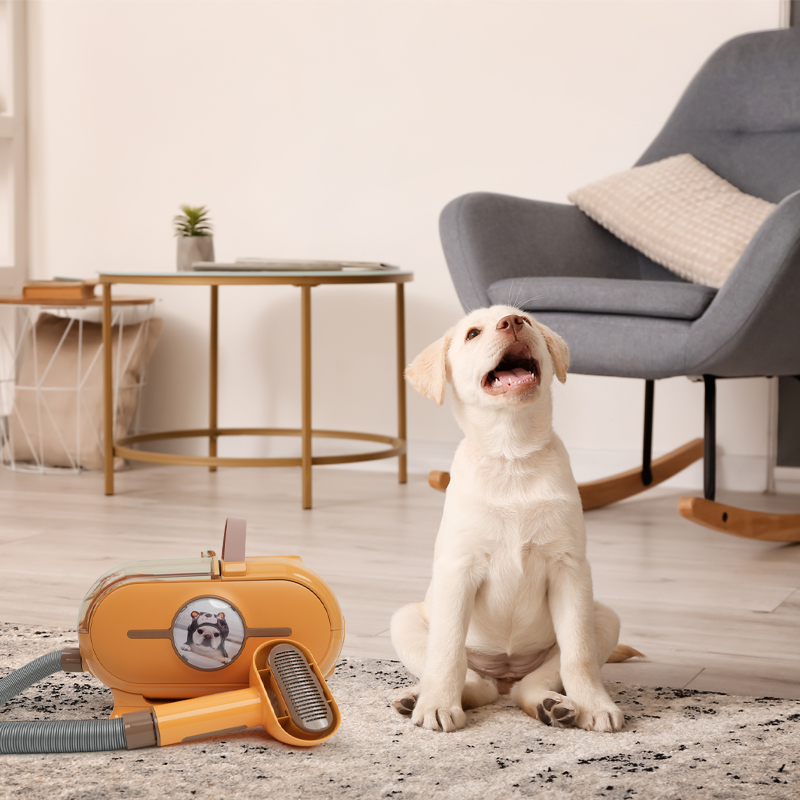When it comes to dog (cat) hair loss, there are several causes that pet owners should be aware of. Understanding these factors can help in addressing and managing the issue effectively.
Seasonal hair change: Similar to how humans adjust their clothing according to the weather, cats and dogs undergo a natural shedding process to adapt to temperature changes. During the months of March to May and September to November, pets may experience increased hair loss as part of this seasonal shedding.
The following are some of the reasons why your pet may be shedding so much hair.
1,Nutrition and diet: Apart from seasonal shedding, an imbalanced or excessively salty diet can also contribute to hair loss in pets. If a pet’s daily food intake lacks essential nutrients or contains high levels of salt over an extended period, it can lead to skin damage and severe hair loss.
2,Pathological hair loss: Hair loss in pets can also be a symptom of underlying health conditions such as skin diseases, parasite infestations, or endocrine disorders. If you observe any abnormal patterns of hair loss in your cat, such as patches of baldness, it is advisable to seek veterinary attention to diagnose and treat any potential medical issues.
3,It’s important to note that regular grooming and maintaining a clean environment can help minimize the presence of pet hair in the house. Brushing your pet’s fur regularly, providing a balanced diet, and addressing any potential health concerns can contribute to reducing excessive shedding and keeping your home cleaner.
l When it comes to daily care for your pets, there are several important aspects to consider:
1,Grooming: If you have a long-haired pet, it’s recommended to brush their fur every day. Start brushing from the root and comb in the direction of hair growth, being careful not to pull too hard to avoid damaging the fur. However, it’s important to be mindful of your pet’s mood while grooming them, as some cats may not enjoy the process.
Balanced diet: As mentioned earlier, a balanced diet is crucial for your pet’s overall health, including their coat condition. Pay attention to providing them with proper nutrition, including essential vitamins and supplements such as lecithin. This can help promote healthy hair growth and reduce excessive shedding.
2,Deworming and cleaning: Regular deworming is necessary to protect your pet from parasites that can contribute to hair loss. Additionally, maintaining a clean living environment can help minimize the presence of loose pet hair. Consider using a pet grooming vacuum cleaner to effectively remove pet hair from furniture and carpets.
3,Accept natural shedding: It’s important to understand that dogs and cats naturally shed their fur as part of their regular cycle. It’s not advisable to try to prevent shedding entirely. Instead, focus on regular brushing to remove loose hair and consider providing your pet with more exposure to sunlight, which can help reduce shedding.
4,By following these daily care practices, you can help minimize excessive hair loss in your pets and maintain a cleaner home environment. Remember to always consider your pet’s individual needs and preferences when caring for their coat
1,Pet Grooming Vacuum cleaner. It is a must for every pet-owning family, not only for vacuuming up hair from pets, but also from bed sheets, bedding, sofas, clothes, trousers, etc. The hoover can be used to remove the hair. The higher the suction power, the better the cleaning effect. However, hoovers with high suction power are often very noisy, so when choosing a hoover you can compare them and choose one with low noise. In addition, most hoovers nowadays are cordless hoovers, which are more flexible and convenient compared to wired hoovers but it should be noted that the endurance time of these hoovers should be more than 30 minutes, otherwise it is easy to have to charge them several times to clean a room.
Post time: Jun-27-2023







